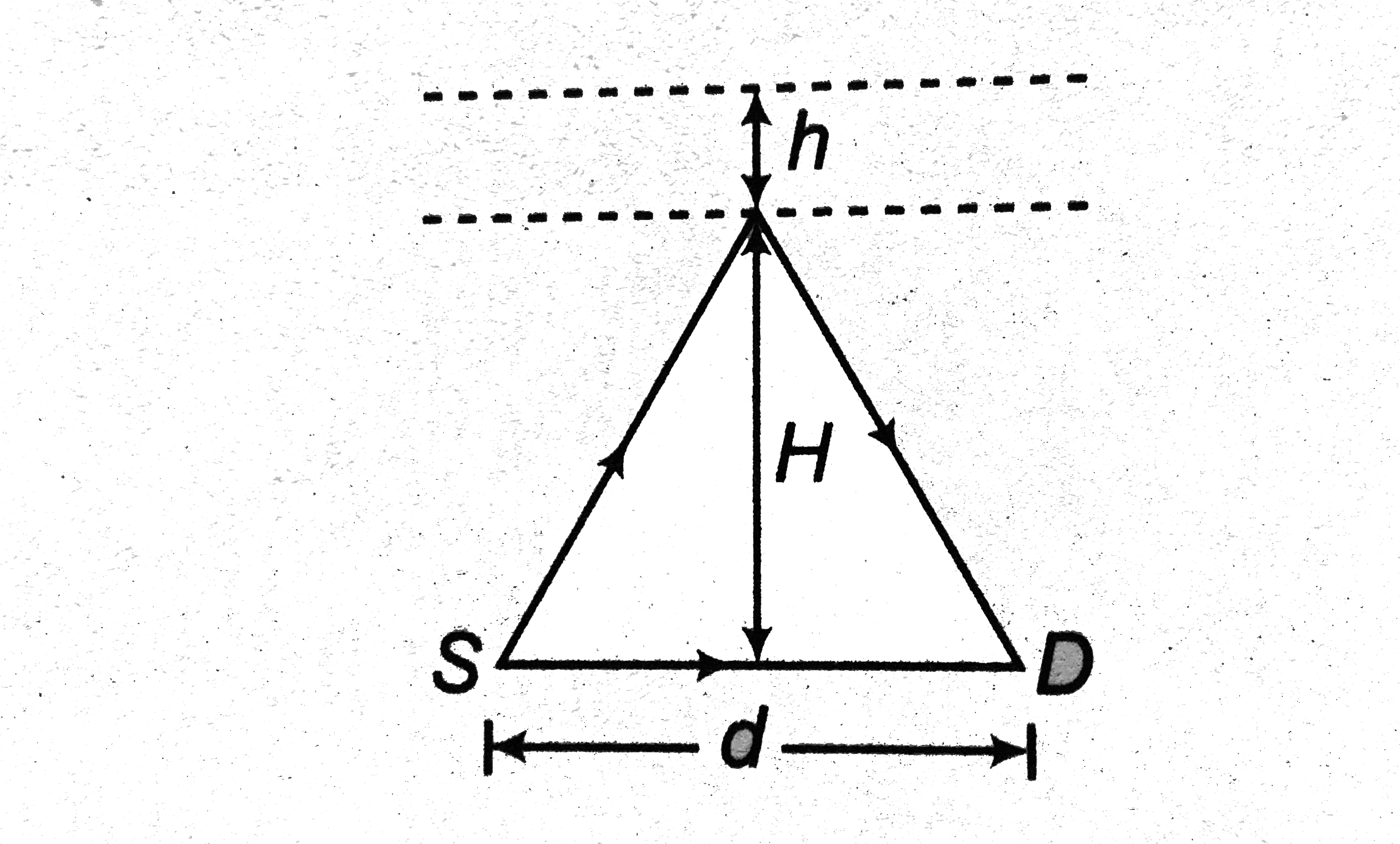A source and a detector of high frequency waves are distance apart on the ground . Maximum signal is received at when the reflecting layer is at a height . When the layer rises a distance , no signals is detected at . Neglecting absorption in the atmosphere , find the relation between , and the wavelength of the waves .

for reinforcement at
Against for total annulment at
Subtracting ,
or
Topper's Solved these Questions
- SUPERPOSITION AND STANDING WAVESBOOK - CENGAGE PHYSICSCHAPTER - SUPERPOSITION AND STANDING WAVESEXERCISE - Exercise 7.2
32 Videos
- SUPERPOSITION AND STANDING WAVESBOOK - CENGAGE PHYSICSCHAPTER - SUPERPOSITION AND STANDING WAVESEXERCISE - Subjective
24 Videos
- SOUND WAVES AND DOPPLER EFFECTBOOK - CENGAGE PHYSICSCHAPTER - SOUND WAVES AND DOPPLER EFFECTEXERCISE - Integer
16 Videos
- THERMODYNAMICSBOOK - CENGAGE PHYSICSCHAPTER - THERMODYNAMICSEXERCISE - 24
1 Videos
Similar Questions
A source S and a detector D high frequency waves are a distance d apart on the ground. The direct wave from S is found to be in phase at D with the wave from S that is reflected from horizontal layer at an altitude H. The incident and reflected rayes make the same angle with the reflecting layer. When the layer rises a distance h, no signal is detected at D . Negle ct absorption in the atmosphere and find the relation between d,h, H and the wavelength λ of the waves.

View SolutionWhat is the average speed of the car if it travels a distance of d km in t h ?
View Solution
Knowledge Check
If g is same at a height h and at a depth d, then
AR=2dBd=2hCh=dDnoneLet gh and gd be the acceleartion due to gravity at height h above the earth s surface and at depth d below the earth 's surface respectively if gh=gd then the relation between h and d is
Ad=hBd=h2Cd=h4Dd=2hLet gh and gd the acceleration due to gravity at height h above the earth s surface and at depth d below the earth surface respecitively if gh=gd then the releation between h and d is
Ad=hBd=h2Cd=h4Dd=2h
A source S and a detector D are placed at a distance d apart. A big cardboard is placed at a distance √2d from the source and the detector as shown in figure. The source emits a wave of wavelength =d2 which is received by the detector after reflection from the cardboard. It is found to be in phase with the direct wave received from the source. By what minimum distance should the cardboard be shifted away so that the reflected wave becomes out of phase with the direct wave ?

View SolutionA source S and a detector D are placed at a distance d apart. A big cardboard is placed at a distance √2d from the source and the detector as shown in figure. The source emits a wave of wavelength =d/2 which is received by the detector after reflection from the cardboard. It is found to be in phase with the direct wave received from the source. By what minimum distance should the cardboard be shifted away so that the reflected wave becomes out of phase with the direct wave?

View SolutionDeduce an expression for the distance from which the T.V. signals can directly be received from a T.V. tower of height h.
View SolutionThe D-layer and E-layer disappear at night in earth's atmosphere? Why?
View SolutionWhen do the three germinal layers differentiate?
View Solution
